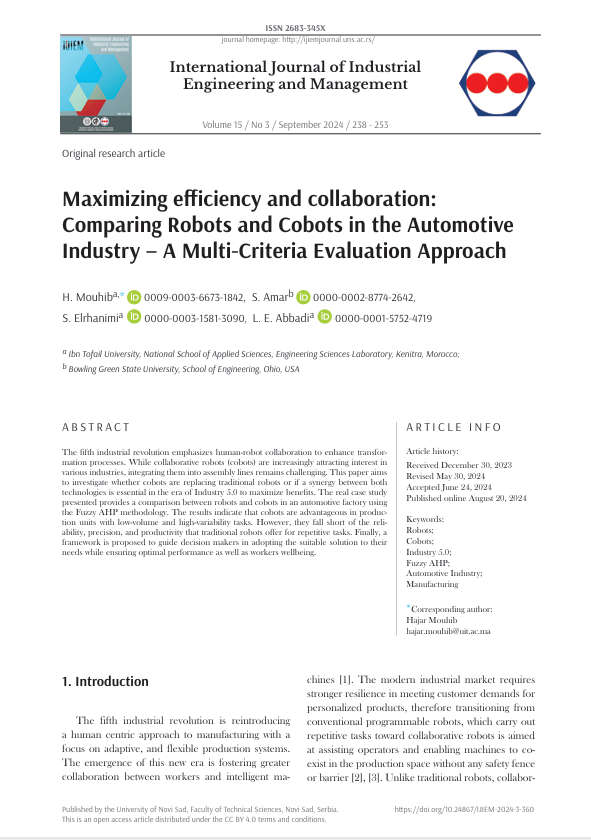Maximizing efficiency and collaboration: Comparing Robots and Cobots in the Automotive Industry – A Multi-Criteria Evaluation Approach

Published 2024-09-01
abstract views: 717 // FULL TEXT ARTICLE (PDF): 5
Keywords
- Robots,
- Cobots,
- Industry 5.0,
- Fuzzy AHP,
- Automotive Industry
- Manufacturing ...More
How to Cite
Copyright (c) 2024 International Journal of Industrial Engineering and Management

This work is licensed under a Creative Commons Attribution 4.0 International License.
Abstract
The fifth industrial revolution emphasizes human-robot collaboration to enhance transformation processes. While collaborative robots (cobots) are increasingly attracting interest in various industries, integrating them into assembly lines remains challenging. This paper aims to investigate whether cobots are replacing traditional robots or if a synergy between both technologies is essential in the era of Industry 5.0 to maximize benefits. The real case study presented provides a comparison between robots and cobots in an automotive factory using the Fuzzy AHP methodology. The results indicate that cobots are advantageous in production units with low-volume and high-variability tasks. However, they fall short of the reliability, precision, and productivity that traditional robots offer for repetitive tasks. Finally, a framework is proposed to guide decision-makers in adopting the suitable solution to their needs while ensuring optimal performance as well as workers wellbeing.
Article history: Received (December 30, 2023); Revised (May 30, 2024); Accepted (June 21, 2024); Published online (August 20, 2024)


